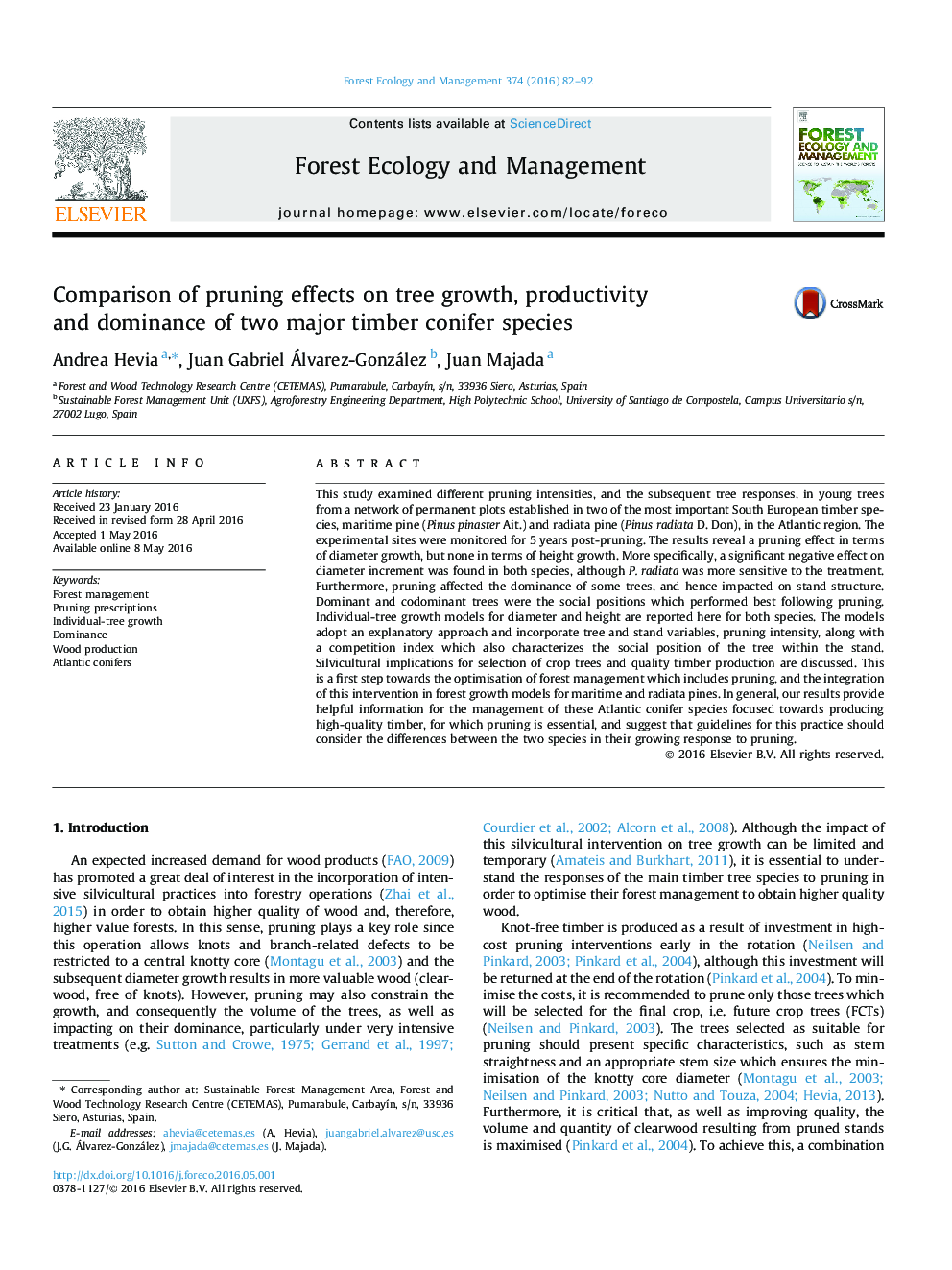| Article ID | Journal | Published Year | Pages | File Type |
|---|---|---|---|---|
| 85892 | Forest Ecology and Management | 2016 | 11 Pages |
•Initial study of tree responses to pruning of young conifers in Atlantic area.•Species and stand structure are key factors in growth response to pruning.•Pruning can influence tree growth, stand structure and tree volume.•Greater effect in lower social status trees and at higher pruning intensities.
This study examined different pruning intensities, and the subsequent tree responses, in young trees from a network of permanent plots established in two of the most important South European timber species, maritime pine (Pinus pinaster Ait.) and radiata pine (Pinus radiata D. Don), in the Atlantic region. The experimental sites were monitored for 5 years post-pruning. The results reveal a pruning effect in terms of diameter growth, but none in terms of height growth. More specifically, a significant negative effect on diameter increment was found in both species, although P. radiata was more sensitive to the treatment. Furthermore, pruning affected the dominance of some trees, and hence impacted on stand structure. Dominant and codominant trees were the social positions which performed best following pruning. Individual-tree growth models for diameter and height are reported here for both species. The models adopt an explanatory approach and incorporate tree and stand variables, pruning intensity, along with a competition index which also characterizes the social position of the tree within the stand. Silvicultural implications for selection of crop trees and quality timber production are discussed. This is a first step towards the optimisation of forest management which includes pruning, and the integration of this intervention in forest growth models for maritime and radiata pines. In general, our results provide helpful information for the management of these Atlantic conifer species focused towards producing high-quality timber, for which pruning is essential, and suggest that guidelines for this practice should consider the differences between the two species in their growing response to pruning.
